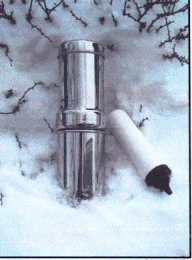
This affinity depends on the charge and is higher for molecules possessing less charge. A second characteristic is the affinity that a given contaminant has with the carbon surface. Compounds that are less water-soluble are more likely to be adsorbed to a solid. The characteristics of the chemical contaminant are also important. Activated carbon filters for water treatment. The characteristics of the carbon material (particle and pore size, surface area, surface chemistry, etc.) influence the efficiency of adsorption. The contaminant is attracted to and held (adsorbed) on the surface of the carbon particles. The principles of adsorptive activated carbon filtration are the same as those of any other adsorption material. Particulate filters exclude particles by size, and adsorptive/reactive filters contain a material (medium) that either adsorbs or reacts with a contaminant in water. There are two basic types of water filters: particulate filters and adsorptive/reactive filters. It is also an upcoming treatment applied for the removal of micropollutants both in drinking water production and for the purification of treated wastewater before disposal (see also surface disposal or surface and subsurface groundwater recharge). However, it is not effective for microbial contaminants, metals, nitrates and other inorganic contaminants.Activated carbon filtration is commonly used in centralised treatment plants and at household level, to produce drinking water and in industries to treat effluents. Activated carbon filters are efficient to remove certain organics (such as unwanted taste and odours, micropollutants), chlorine, fluorine or radon, from drinking water or wastewater. (1995)ĭuring water filtration through activated carbon, contaminants adhere to the surface of these carbon granules or become trapped in the small pores of the activated carbon (AMIRAULT et al. A typical carbon particle has numerous pores that provide a large surface area for water treatment. Activated carbon is a material prepared in such a way that it exhibits a high degree of porosity and an extended surface area. Charred wood, bones and coconut charcoals were used during the 18th and 19th century by the sugar industry for decolourising solutions (CECEN 2011).

In Hindu documents dating from 450 BC charcoal filters are mentioned for the treatment of water.

The use of carbon in the form of charcoal has been used since antiquity for many applications.


 0 kommentar(er)
0 kommentar(er)
